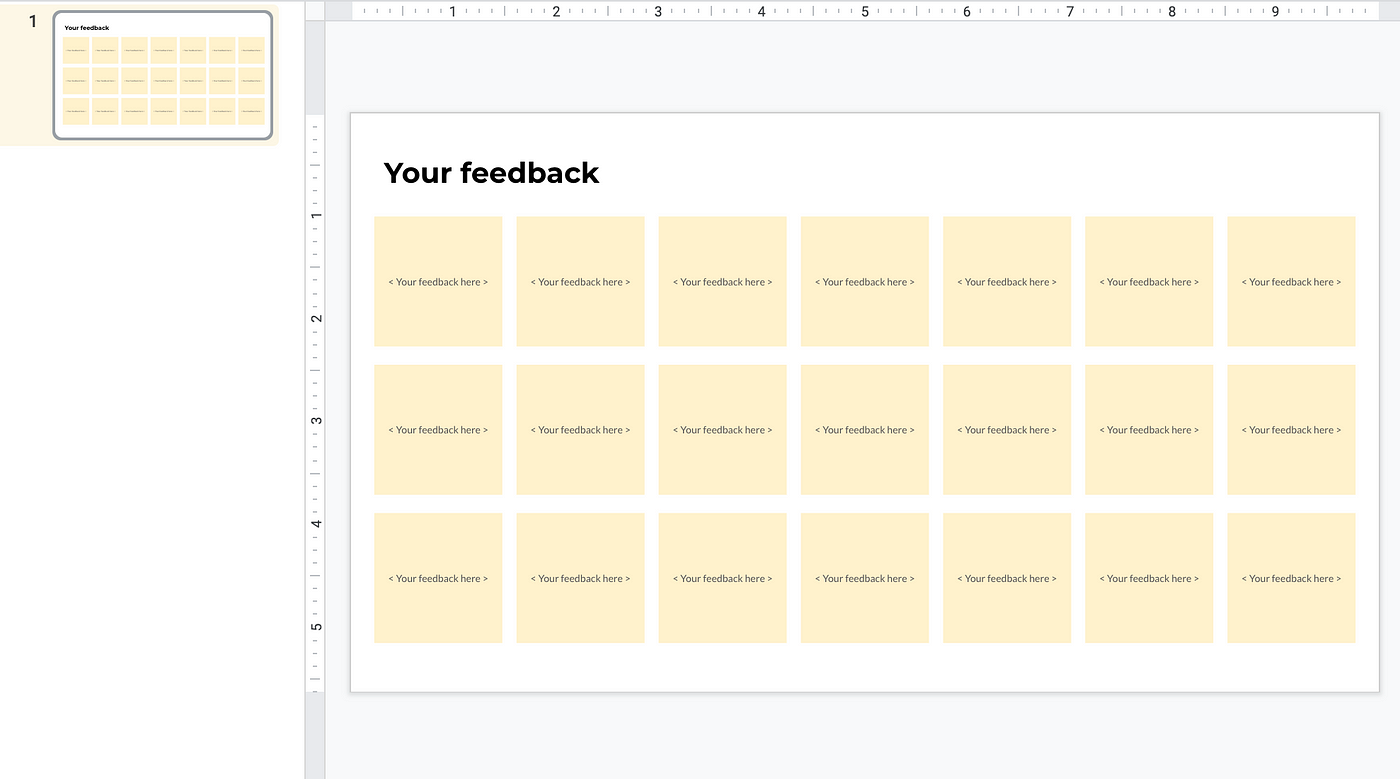

Running effective remote design critiques
source link: https://uxdesign.cc/running-effective-remote-design-critiques-part1-9d7b6180bd2c
Go to the source link to view the article. You can view the picture content, updated content and better typesetting reading experience. If the link is broken, please click the button below to view the snapshot at that time.
Running effective remote design critiques
Part 1: The problem with design critiques, too many post-its and not enough time
I remember the first time I presented at a design critique.
After presenting, every designer took turns sharing their feedback. By the end, I left feeling exhausted with a pile of colorful post-its. I sorted them afterwards, clustered the common themes and prioritized what I might take on.
How design critique felt to me — an exaggeration, of course (image credits to GIPHY)
Design critiques are an important part of a design team’s culture. It gives designers visibility on what other teams are working on and creates alignment.
You might learn, for example, that you are working on a similar design pattern as someone else. Something like this needs alignment before adding it to the design system.
It’s also a great way to learn from other awesome designers — how they organize files, their workflows and thought process.
Every team has their own etiquettes and ways of running design critiques. Figma, for example, has a well-documented guide on the 6 different critique methods. Atlassian calls it sparring, while we called it ‘design huddle’ at the time.
What we didn’t expect, of course, was COVID 🦠.
The problem with design critiques
When COVID hit, this format had to be scrapped. There were no more post-its and thankfully — no more fidgeting with screen projection in the meeting room.
With everything remote and Figma-first, this gave us an opportunity to rethink how we could improve or run critiques differently.
We did a quick survey with the team and quickly discovered a few challenges.
Design critiques are intimidating
Phew! Turns out I wasn’t the only one who felt this way.
To create a safe space for presenters, design teams will often define design critique etiquettes (we won’t get into that today) to promote respect and open-mindedness.
The problem is that not everyone likes presenting. When all eyes are on you and questions come one after another, designers can’t help but feel slightly overwhelmed.
I’ve never been to court personally, but after a few rounds of interrogation, it does start to feel like judgment day.
When all eyes are on you as you present designs (image credits to Simpsons and TV fanatic)
So the first question is, HMW help presenters feel more comfortable sharing their designs?
Hard to give quality feedback
When seeing a design for the first time, you need time to process.
If you are not given the time to read or click through designs, it’s hard to give quality feedback. Whether it’s online or in-person, looking at the designs from a screen share just doesn’t give you enough time to process.
To be fair to the presenter, HMW help critiquers give constructive and quality feedback?
Repetitive feedback
If there are 10 designers critiquing and each person takes 5 minutes, that is already 50 minutes for just one sharing.
By the time you go around the table, it becomes an echo of previous feedback. That potentially leaves the last person with little more to contribute.
Echoing the last few critiquer’s feedback, over and over (image credits to GIPHY)
If 50% of it was repeated feedback, you could have ended the meeting earlier or given that time to someone else to share their designs.
So we wondered, HMW make design critiques more efficient and effective?
Risk of groupthink
When taking turns to share feedback, it’s inevitable to get influenced by other’s perspectives. In some ways, it’s a great way to encourage discussion, but it can also result in groupthink.
Groupthink is when people strive for consensus to preserve harmony and conformity within the group. That sounds democratic on the surface but usually means that only the loudest voices are heard. Once someone builds on that energy or opinion, others may decide not to speak up to avoid disruption or conflict.
When people get influenced by other’s feedback, we lose the value of individual think.
HMW promote equal voices to ensure quality and diverse feedback?
Experimenting with different formats
When we first transitioned everything online, it was quite disjointed.
At first, we tried to replicate the old process. Aside from the standard “you’re on mute”, the presenter would talk through his or her designs through screenshare. After presenting, the floor was open for anyone to ask any clarifying questions.
We then gave critiquers 5 to 10 minutes to write down their feedback on virtual post-its on a Google slide.

Virtual post-its on Google slide to capture feedback
Each post-it was “signed” by the critiquer, so if time ran out, the presenter can reach out to the respective critiquer for any follow-up questions.
This became inefficient and more work as designers found themselves copying and pasting the feedback into their Figma board.
Luckily Figjam launched just in the time, and we migrated everything to a single board there.
After a few more rounds of refinement, we found our process.
To see where we landed, check out Part 2 where Jerry Chang dives into the key principles and the format we found most effective.
Recommend
About Joyk
Aggregate valuable and interesting links.
Joyk means Joy of geeK